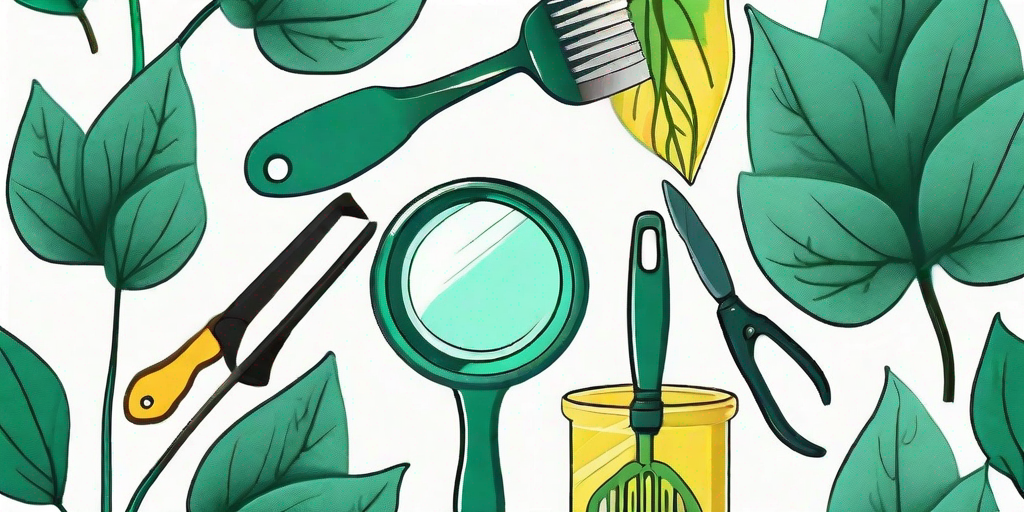
Ah, the ivy! A gardener's delight and sometimes, a gardener's plight. Ivy is a robust and versatile plant, adorning walls and fences with its lush greenery. But what happens when this green beauty starts to turn a sickly yellow? Fear not, dear gardener, for we are here to guide you through the process of diagnosing and treating this common ivy problem.
Understanding Ivy
Before we dive into the yellowing issue, let's take a moment to understand our subject. Ivy, or Hedera, is a genus of 12–15 species of evergreen climbing or ground-creeping woody plants. It's a popular choice for many gardeners due to its hardiness and ability to provide year-round coverage.
However, like any plant, ivy is not immune to problems. Yellowing leaves, or chlorosis, is one of the most common issues encountered. It can be a sign of several different problems, from nutrient deficiencies to disease. But don't worry, we're here to help you crack the code!
Diagnosing the Problem
Now, let's put on our detective hats and get to the bottom of this yellowing mystery. The first step is to examine the plant closely. Are all the leaves turning yellow, or just a few? Are there any other signs of distress, like spots or wilting?
Next, consider the environment. Has there been any changes recently? A new fertilizer, perhaps, or a change in watering habits? All these clues can help you pinpoint the cause of the yellowing.
Potential Causes
Here are some of the most common causes of yellowing ivy:
- Nutrient Deficiency: Ivy needs a balanced diet to stay healthy. If it's lacking in certain nutrients, like iron or nitrogen, it may start to yellow.
- Overwatering: Ivy likes well-drained soil. Too much water can lead to root rot, which in turn can cause yellowing.
- Disease: Certain diseases, like leaf spot or bacterial leaf blight, can cause yellowing.
- Pests: Pests like aphids or spider mites can cause yellowing by sucking the sap from the leaves.
Treating the Problem
Once you've identified the cause, it's time to take action. Here are some solutions for the common causes we've listed:
Nutrient Deficiency
If you suspect a nutrient deficiency, a soil test can confirm your suspicions. Once you know what's missing, you can add a fertilizer that contains the needed nutrients. Remember, moderation is key. Too much fertilizer can cause more harm than good.
Overwatering
Overwatering is a common problem, especially for enthusiastic gardeners. If you think you've been giving your ivy too much H2O, cut back on the watering. Allow the soil to dry out a bit between waterings. If the problem persists, you might need to improve the drainage by adding sand or perlite to the soil.
Disease
If disease is the culprit, you'll need to remove the affected leaves and treat the plant with a fungicide. In severe cases, you might need to remove the entire plant to prevent the disease from spreading.
Pests
Pests can be a bit trickier to deal with. You'll need to identify the pest first, then choose an appropriate treatment. This could be an insecticidal soap, a pesticide, or even introducing natural predators like ladybugs.
Preventing Future Problems
As the old saying goes, prevention is better than cure. Here are some tips to keep your ivy healthy and green:
- Water wisely. Ivy likes well-drained soil, so avoid overwatering.
- Feed your ivy. A balanced fertilizer can help prevent nutrient deficiencies.
- Keep an eye out for pests and diseases. Early detection can make treatment easier and more effective.
- Provide the right environment. Ivy prefers partial to full shade and cool temperatures.
Frequently Asked Questions
- Why is my ivy turning yellow?
- Yellowing ivy can be caused by several factors, including nutrient deficiencies, overwatering, disease, and pests.
- How can I treat yellowing ivy?
- The treatment depends on the cause. It could involve adjusting your watering habits, adding fertilizer, treating for disease, or dealing with pests.
- How can I prevent my ivy from turning yellow?
- Prevention involves proper care and maintenance, including watering wisely, feeding your ivy, monitoring for pests and diseases, and providing the right environment.
So there you have it, dear gardener. With a bit of detective work and some TLC, you can turn your yellowing ivy back to its lush, green self. Happy gardening!















